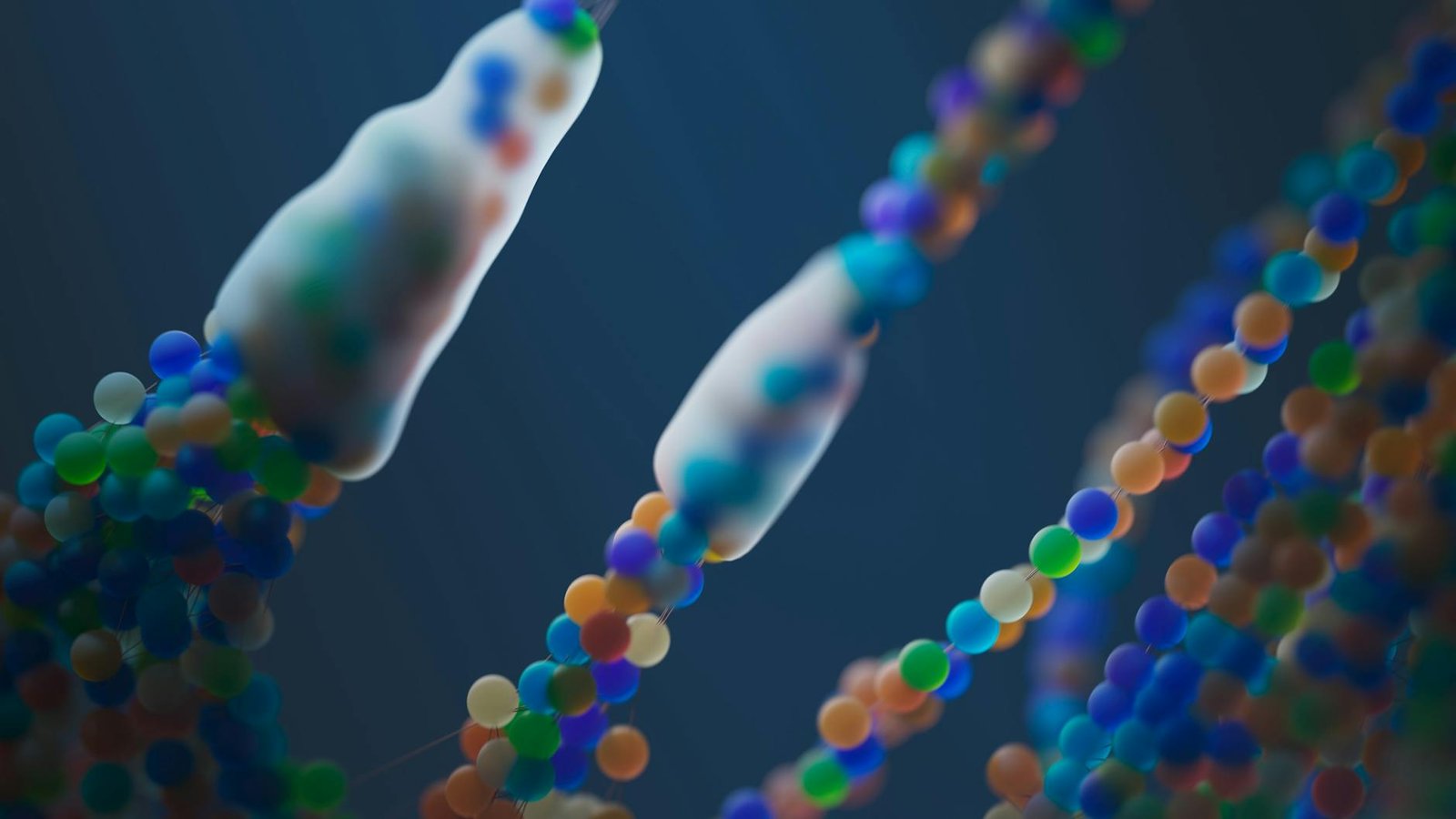Last Updated on December 2, 2024 by Daniele Lima
Understanding Dopamine’s Role in the Brain’s Reward Cycle
Dopamine, one of the fundamental neurotransmitters in the human brain, plays a crucial role in processes that govern pleasure, motivation, and the consolidation of behaviors. This neurotransmitter is often called the “reward molecule”, due to its close relationship with the pleasure and sense of well-being that emerge from pleasant experiences.
Its influence is fundamental in regulating emotional responses and motivating activities that provide satisfaction. However, its impact goes beyond mere pleasure: dopamine is crucial for habit formation and the development of addictions. Understanding the dopamine-driven reward cycle and its influence on repeat behaviors can elucidate the reasons why certain activities and substances become notoriously difficult to avoid. Furthermore, this understanding can shed light on the formation of healthy habits and addictions.
Table of Contents
How Dopamine Drives Habit Formation and Behavior
Dopamine is secreted in the brain in response to stimuli that provide pleasure or suggest possible gratification. This process occurs predominantly in the area designated as the reward system, which encompasses the nucleus accumbens, the prefrontal cortex, and the limbic system. When we perform actions that provide pleasure – whether tasting delicious food, engaging in a rewarding activity, or achieving a significant goal – dopamine is released, resulting in an experience of well-being.
This neurochemistry is fundamental to our motivation and satisfaction. This “reward cycle” catalyzes the desire to repeat the behavior, consolidating the action that provided the pleasure. This reward system is essential for maintaining survival and well-being. It encourages us to seek food, shelter, socialization, and other activities that promote health and the continuity of life. However, the same mechanism that facilitates the formation of beneficial habits can also generate harmful behaviors, when the search for pleasure and gratification goes beyond limits or becomes uncontrolled. Here the role of dopamine in the formation of addictions stands out.
How Dopamine Drives Habit Formation and Behavior
Explore the science behind dopamine and its role in shaping our actions, motivations, and habits.
| Aspect | Description |
|---|---|
| Dopamine and the Brain | Dopamine is released in response to stimuli that provide pleasure or suggest gratification. This process occurs in the brain’s reward system, which includes the nucleus accumbens, prefrontal cortex, and limbic system. Learn more on the National Center for Biotechnology Information (NCBI). |
| Reward Cycle | Actions that provide pleasure release dopamine, creating a sense of well-being. This motivates the repetition of such behaviors, forming habits and consolidating actions associated with gratification. Read about habit formation on American Psychological Association (APA). |
| Biological Importance | The reward system ensures survival by encouraging activities like seeking food, shelter, and social interaction, promoting health and continuity of life. Discover more about the brain’s reward system at Healthline. |
| Dopamine and Addiction | While beneficial for positive habit formation, the same mechanism can lead to harmful behaviors and addictions when the search for pleasure becomes uncontrolled or excessive. Find in-depth information at Psychology Today. |
Building Healthy Habits Through Dopamine Motivation
The formation of a habit can be interpreted as a series of three steps: trigger, behavior, and reward. With each repetition of this cycle, the brain releases dopamine, establishing an increasingly robust connection between the stimulus and the action.
For example, an individual who maintains the habit of consuming coffee at dawn usually starts with the trigger (awakening), followed by the behavior (making coffee), and, finally, the reward (feeling of pleasure and increased mental alertness). Over time, this cycle repeats itself until the act of consuming coffee becomes automatic and difficult to stop, establishing a robust habit.
Dopamine plays a crucial role in this process, as its release strengthens the connection between the trigger and the reward. In more elaborate terms, the brain develops the ability to anticipate pleasure and satisfaction based on repeated behaviors, which results in an increasing inclination to automatically repeat these actions. This mechanism is responsible for creating automatic routines, which are not always carried out consciously.
The habit of engaging in constructive actions can provide lasting benefits, as dopamine strengthens behaviors that promote physical and mental well-being. Practicing regular exercise, adopting a balanced diet, and committing to studying to achieve goals are examples of healthy habits that are catalyzed by the reward cycle.
When repeating such activities, the continuous release of dopamine provides a motivational stimulus to maintain these practices. This process, however, will require initial awareness and methodical repetition, so that the behavior is consolidated as a beneficial habit.
Research indicates that dopamine plays a crucial role in motivating an individual to repeat behaviors, even during periods of demotivation or fatigue, since the brain has conditioned itself to anticipate a subsequent reward for the activity.
The Dark Side of Dopamine: When Habits Become Addictions

Although dopamine can contribute to the formation of healthy habits, its influence can actually work in the opposite direction. The same mechanism that strengthens beneficial behaviors can also give rise to harmful patterns, establishing an intricate relationship with addictions.
Substances such as drugs, alcohol, nicotine, and even certain behaviors, such as excessive use of social media, are capable of inducing high levels of dopamine, establishing a cycle of reward and reinforcement that can lead to addiction. When ingesting an addictive substance, the brain experiences a significant increase in dopamine levels, which results in an intense experience of pleasure.
However, as the brain adjusts to these extremely high levels of dopamine, it begins to need higher amounts to reach the same level of contentment. This phenomenon is called tolerance and constitutes one of the elements that favor addiction. The individual becomes dependent on the substance (or behavior) to achieve well-being or, ultimately, to avoid the discomfort resulting from the absence of dopamine, which perpetuates the cycle of addiction.
As the brain adjusts to the dependence on the increase in dopamine conferred by the addictive substance or behavior, there is a decrease in the ability to exercise control over impulses. The brain region responsible for assessing risks and making rational decisions, the prefrontal cortex, shows a decrease in efficiency in individuals who are addicted.
In more sophisticated terms, the brain tends to value instant gratification over adverse consequences that may arise in the long term, thus complicating the cessation of addictive behaviors.
This incessant process of searching for instant gratification can result in substantial consequences in the subject’s life, such as health problems, financial difficulties, social alienation, and even legal complications. The interconnection between dopamine and addiction demonstrates how the same neurotransmitter that drives healthy behaviors and motivation can, paradoxically, predispose to loss of control in certain circumstances.
Managing Dopamine: Strategies to Prevent Harmful Dependencies
The environment and lifestyle have a crucial impact on modulating dopamine levels, as well as the tendency to develop habits and addictions. For example, continuous exposure to stimuli such as social networks, games, and online shopping provides small releases of dopamine with each notification or achievement.
This practice amplifies the risk of digital dependencies, since the incessant search for immediate rewards compromises concentration on long-term activities and the adoption of healthier habits. Conversely, an environment that encourages the practice of physical activities, a balanced diet, and authentic social interactions encourages the establishment of habits that contribute to maintaining healthy dopamine levels, promoting a feeling of well-being without relying on artificial stimuli.
Dopamine Dependency Quiz
Understand your habits and dopamine’s role in shaping them. Get personalized strategies to improve balance.
Conquering the Dopamine Cycle for Better Life Choices
Consciously managing dopamine release is a crucial step in preventing the formation of addictions and fostering healthy habits. Among the available strategies, the following stand out:
Set long-term goals: Focus on actions that provide lasting rewards over instant gratification. Playing sports, studying, or developing skills can offer satisfaction, eliminating the risk of addiction. These activities promote well-being and enrich life in a healthy way.
Practice self-monitoring: Observing and reflecting on your own behavior can help identify addiction patterns and trends. This practice favors a greater understanding of the self and promotes self-awareness. Monitoring applications can be valuable tools in self-assessment, as well as promoting the adoption of healthier habits.
Managing the use of social networks and devices is essential: Restricting the use of smartphones and social platforms at specific intervals throughout the day helps to mitigate exposure to stimuli that encourage the repeated release of dopamine.
Focus on practices that promote well-being: Activities such as meditation, yoga, and contact with nature are effective in reducing anxiety and promoting well-being, eliminating the need for external stimuli.
Seek professional support: In cases where the addiction is consolidated, seeking psychological assistance and behavioral therapies can be crucial for the recovery and regulation of impulses.
Conclusion
Dopamine plays an intricate and significant role in forming habits and addictions, shaping how we pursue rewards and reiterate behaviors. By absorbing how the reward cycle works, we can learn to encourage habits that promote well-being and, at the same time, prevent the formation of harmful dependencies. Dopamine can represent an allied force of considerable power in building a healthy and balanced life, as long as it is used with due awareness and self-control. Understanding the influence of dopamine and implementing tactics that promote emotional and behavioral harmony are essential steps to maximizing the potential of this neurotransmitter in building a more rewarding life that is less vulnerable to the dangers of addiction.
Dopamine and Habits - FAQs:
What exactly is dopamine?
Dopamine is a neurotransmitter in the brain that plays a crucial role in pleasure, motivation, and reward. It's often called the "reward molecule" because it makes us feel good when we do something enjoyable.
How does dopamine contribute to habit formation?
Dopamine reinforces behaviors by creating a reward cycle. When you do something pleasurable, your brain releases dopamine, making you want to repeat that action. Over time, this can turn an action into an automatic habit.
Can dopamine cause addiction?
Yes, dopamine can contribute to addiction. When substances or behaviors trigger high dopamine releases, the brain begins to crave more intense stimulation, potentially leading to addictive patterns.
How can I manage my dopamine levels (dopamine detox)?
Manage dopamine by:
- Setting long-term goals
- Practicing self-monitoring
- Limiting social media use
- Engaging in wellness activities like meditation
- Seeking professional support if needed









Leave a Reply